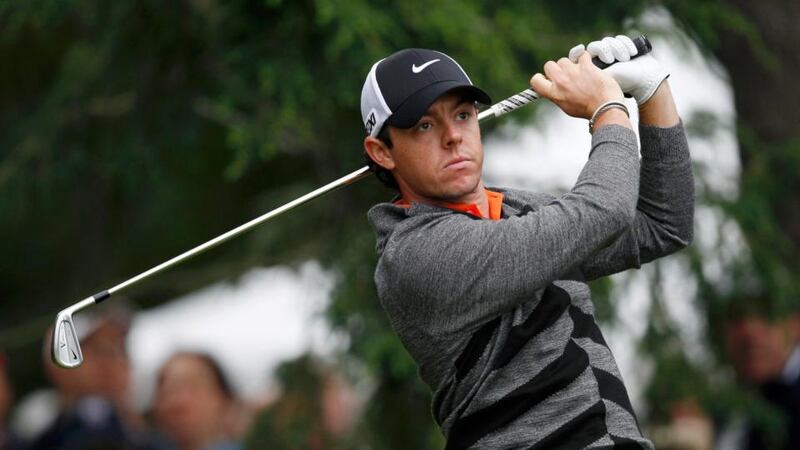An old lady scorned can be an unforgiving adversary, and – on a day which gradually transformed from chilly to sunny - the one constant was the difficulty of the East Course here at Merion. The theorists who wondered if a dated course could play host to modern golf's powerful hitters using state-of-the-art technology were given an unequivocal riposte as the examination in this 113th US Open proved beyond many of those with aspirations to the title.
As the world's number one and two, Tiger Woods and Rory McIlroy, grinded out scores to move into contention over the weekend, the list of casualties numbered some who had bullish claims to the crown. Among them were past champions Graeme McDowell and Jim Furyk, both outfoxed on this occasion. "I'm temporarily dejected. I struggled, but that's golf and that's the US Open. This golf course will do that to you," said McDowell, who carded four double-bogeys in a second round 77 for 153 that had him languishing at the wrong end of the leaderboard.
American Billy Horschel - whose cocksure attitude is matched by an ability to also let his clubs do the talking - assumed the clubhouse lead with a fine 67 for 139, one-under-par, a performance that indicated that the course, for all of its complexity, was manageable. Someone, it seems, will always find a way.

Horschel, with five top-10s in his last seven appearances on the US Tour, including a maiden tour win in the New Orleans Classic, has worked with a sports psychologist to bring patience to his game. Clearly, it has worked.
“I just think that the older I get, the more mature I get on the golf course, the more understanding that if I do have a bad stretch of holes, I just don’t press (the panic button) right away. You’re going to have a couple of bad holes, but if you get in a flow you can sort of get something going. Patience is something that has always been a struggle for me. I’m doing a really good job of it this week, staying patient and just taking what’s in front of me. I’m trying to keep a smile on my face and be happy with anything I do,” said Horschel.
For much of a day attempting to play catch-up with the lost hours of Thursday's weather-marred opening salvo, it had seemed as if England's Luke Donald, who has flattered only to deceive so often in the Majors, would be the man everyone would chase. Donald reached four-under and the sole lead with birdies at two of his opening three holes, but, by the end, he had been brought back down to earth with a run of four successive bogeys coming in.
“You try not to panic in US Opens, you try to take each hole as it comes. You’re going to make mistakes (and) I need to minimise those mistakes over the next couple of days,” reflected Donald who, nevertheless, signed for a 72 for 140 that put him very much into the mix.
The danger zones lay everywhere, in the rough, and in deep bunkering. Beyond the cut-down out-of-bound stakes, and in the water hazards. And, despite their receptiveness, on the greens. The overall examination - on a course measuring 6,901 yards for the second round - was one that tested mind and body. There was no rest, no let-up. It was a day to grind.
As McIlroy observed of the set-up: “If you don’t hit the fairways here, you’re not going to score. If you do hit the fairways, it’s still a big challenge from there.”
McIlroy, an old adversary of Horschel’s going back to their Walker Cup days at Royal Co Down in 2007 but who has since gotten to know the American well, showed his own patience to move into the mix. Unlike the dominant manner in which he claimed his two Majors in the US Open (at Congressional in 2010) and the US PGA (at Kiawah Island last year) when he ran away from the field, this latest quest is more dependant on stealth. He is the pursuer this time, rather than the one being chased.
“I’ve been telling everyone for a while that the game is getting there and to get through two rounds of the toughest test at the US Open and play the way I did, it’s very promising going into the weekend,” said McIlroy.
Likewise, world number one Tiger Woods - who matched McIlroy’s opening rounds of 73 and 70 to be locked on 143 with the Ulsterman - was focused only on what lies ahead going into a weekend when the course is set to play firmer and faster. The plan? “Just keep grinding. You just don’t ever know what the winning score is going to be . . . we have a long way to go.”
First round leader Phil Mickelson was among the later starters, aware that he wouldn't complete his second round until Saturday. Lefty opened with a bogey on the first, to drop to two-under. Horschel, by then, was settling well into his role as clubhouse leader.












